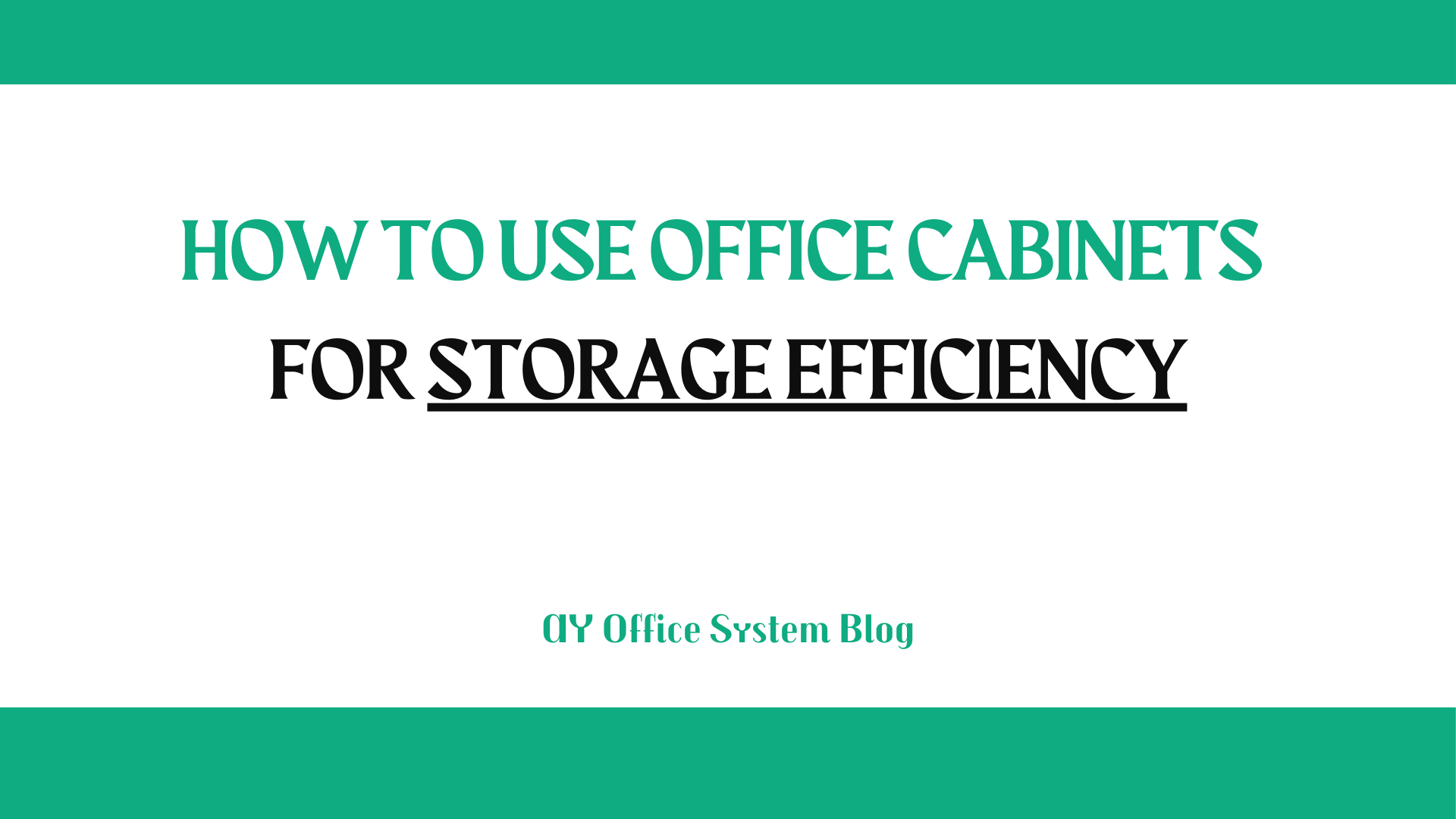Efficient use of office cabinets can help transform a cluttered workspace into a well-organized environment. Whether you work from home or are tidying up your home office, selecting the right cabinets and using them correctly can make a significant difference.
Here’s a guide to help you unlock the full potential of office cabinets.
1.0 Types of Office Cabinets
Understanding the different types of office cabinets is key to choosing the right one:
- Lateral Cabinets: Wide designs that provide ample horizontal storage for files, binders, or stationery.
- Vertical Cabinets: Tall and narrow, these save floor space while offering high storage capacity.
- Rolling Cabinets: Portable cabinets ideal for flexible setups, allowing you to move storage as needed.
- Wall-Mounted Cabinets: Fixed cabinets that keep the floor clear, perfect for compact office spaces.
- Open Shelving Cabinets: Excellent for showcasing books, decor, or items you need easy access to, while still maintaining some organization.
By selecting the correct type, you can customize your storage solution for your specific workspace.
2.0 Materials Used in Office Cabinets
Office cabinets come in various materials, each offering different advantages. Here are common options:
- Wood: Offers a classic and warm appearance, suitable for traditional home offices. Be sure to pick wooden cabinet for durability.
- Metal: Robust and durable, best for offices needing high-security storage. Often used for filing cabinets.
- Steel: Durable enough to hold heavy documents and easy to maintain.
- Laminate: Cost-effective and easy to clean. These are lightweight yet come in various finishes to match any decor.
- Plastic: Lightweight, durable, and often used for smaller cabinets or portable solutions.
The material you choose should align with your storage requirements, budget, and home office aesthetic.
Quick tip, if you always have heavy items in your office, steel cabinets can bring you many benefits and allow you to use space more efficiently.
3.0 How to Choose the Right Size
Selecting cabinets that fit your space is critical for maintaining a functional and aesthetically pleasing office. Here’s what to consider:
- Measure Your Space: Start by measuring the dimensions of the area where the cabinet will be placed.
- Consider Storage Needs: Think about what you need to store. Larger cabinets are suitable for bulk storage, such as files and equipment, while smaller ones work well for stationery and personal items.
- Plan for Future Needs: Choose a cabinet that has extra room for growth, like new files or office gadgets.
Being precise about size ensures that your cabinet doesn’t overwhelm the room or leave unused space.
4.0 Locking Systems for Security
Keeping your work documents and items secure is important. Here are common locking systems for office cabinets:
- Key Locks: Traditional and straightforward locking methods, suitable for basic security.
- Combination Locks: Key-free options that rely on a preset numerical code.
- Electronic Locks: Advanced security that often includes keypads or biometric access.
- No Lock: For items that don’t require security, simpler cabinets without locks are more convenient.
Understand your security needs and choose a cabinet with the appropriate locking mechanism.
5.0 Office Cabinet Organization Tips
Organizing your office cabinet is as important as choosing the right one. Follow these steps:
- Declutter First: Remove any unnecessary items before organizing the cabinet to free up space.
- Categorize Items: Group similar items together, such as documents, office supplies, and personal belongings.
- Label Drawers or Shelves: Use labels to visually organize where each item group belongs for easy access.
- Use Dividers: Separate items within drawers using dividers to prevent mixing and allow better arrangement.
- Store Frequently Used Items at Eye Level: Keep often-used items in easily accessible drawers or shelves to save time.
- Maximize Vertical Space: Stack items vertically or use vertical dividers for better use of space in tall cabinets.
These quick adjustments will ensure your cabinet stays functional and clutter-free.
6.0 Final Thoughts
By understanding the types, materials, and features of office cabinets, alongside using practical organization strategies, you can turn your workspace into a model of efficiency. Selecting a cabinet suited to your needs not only saves space but also supports your productivity by creating a more organized office environment.
Remember, every well-organized office starts with the right tools—and office cabinets are among the most essential.





